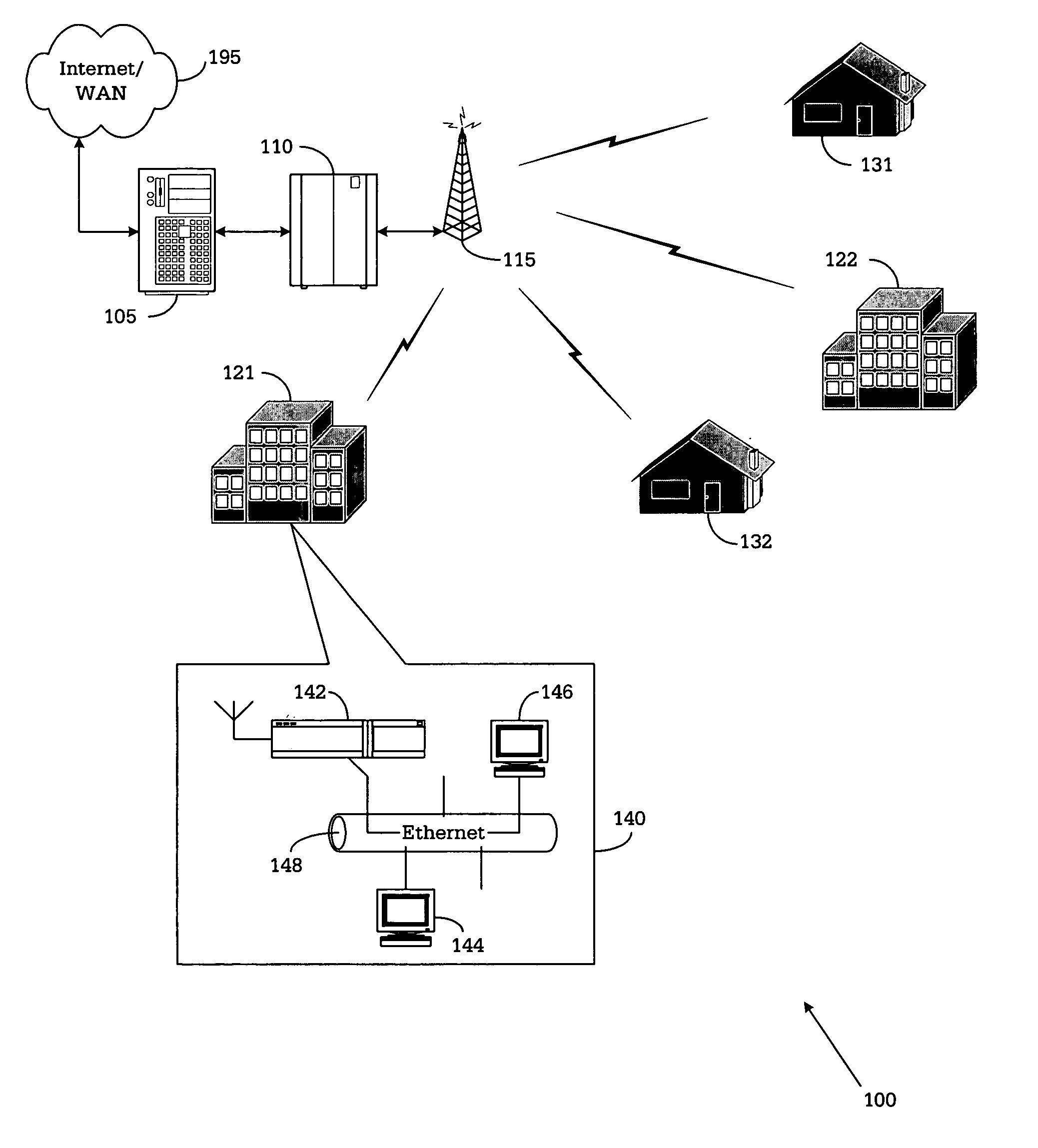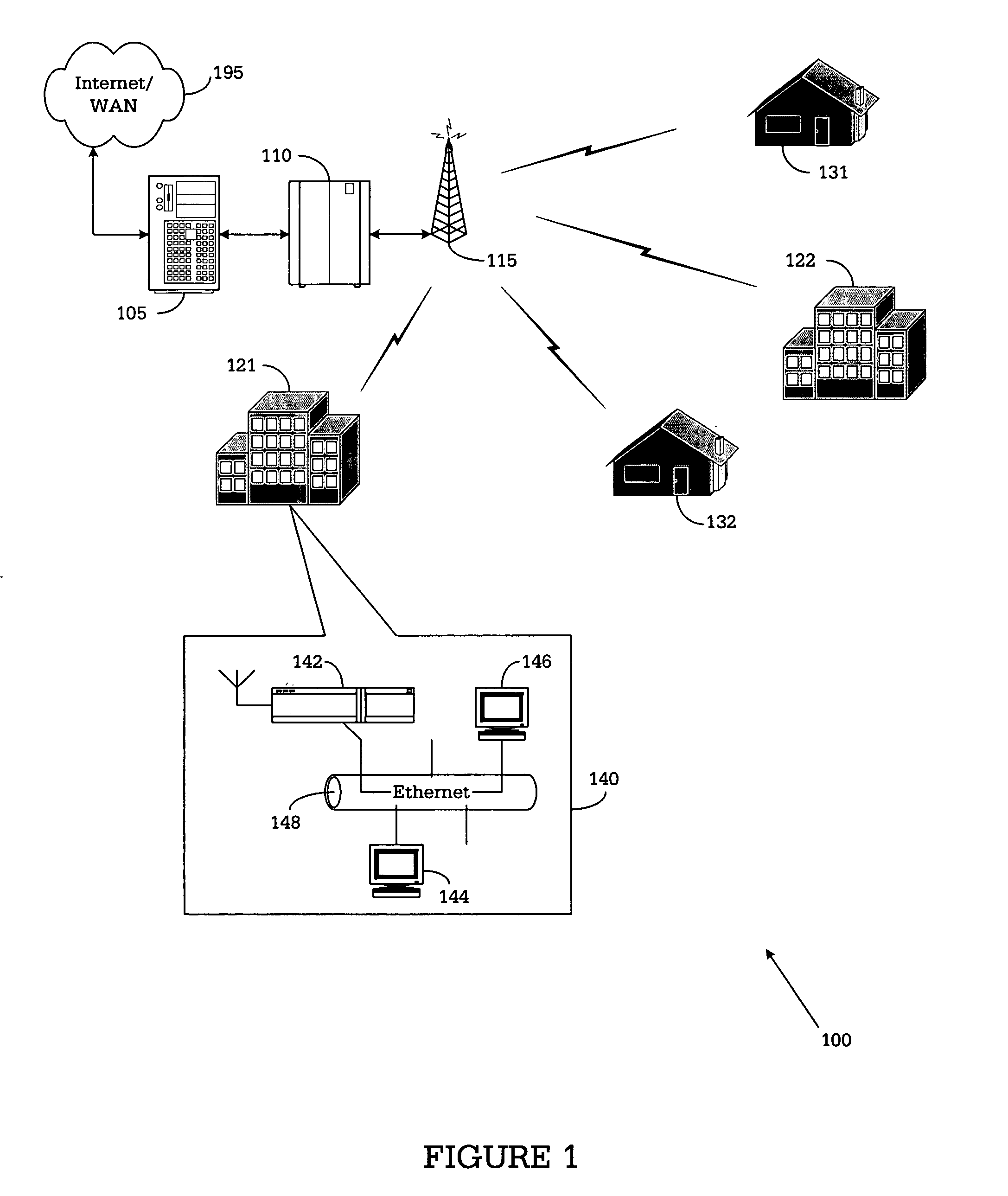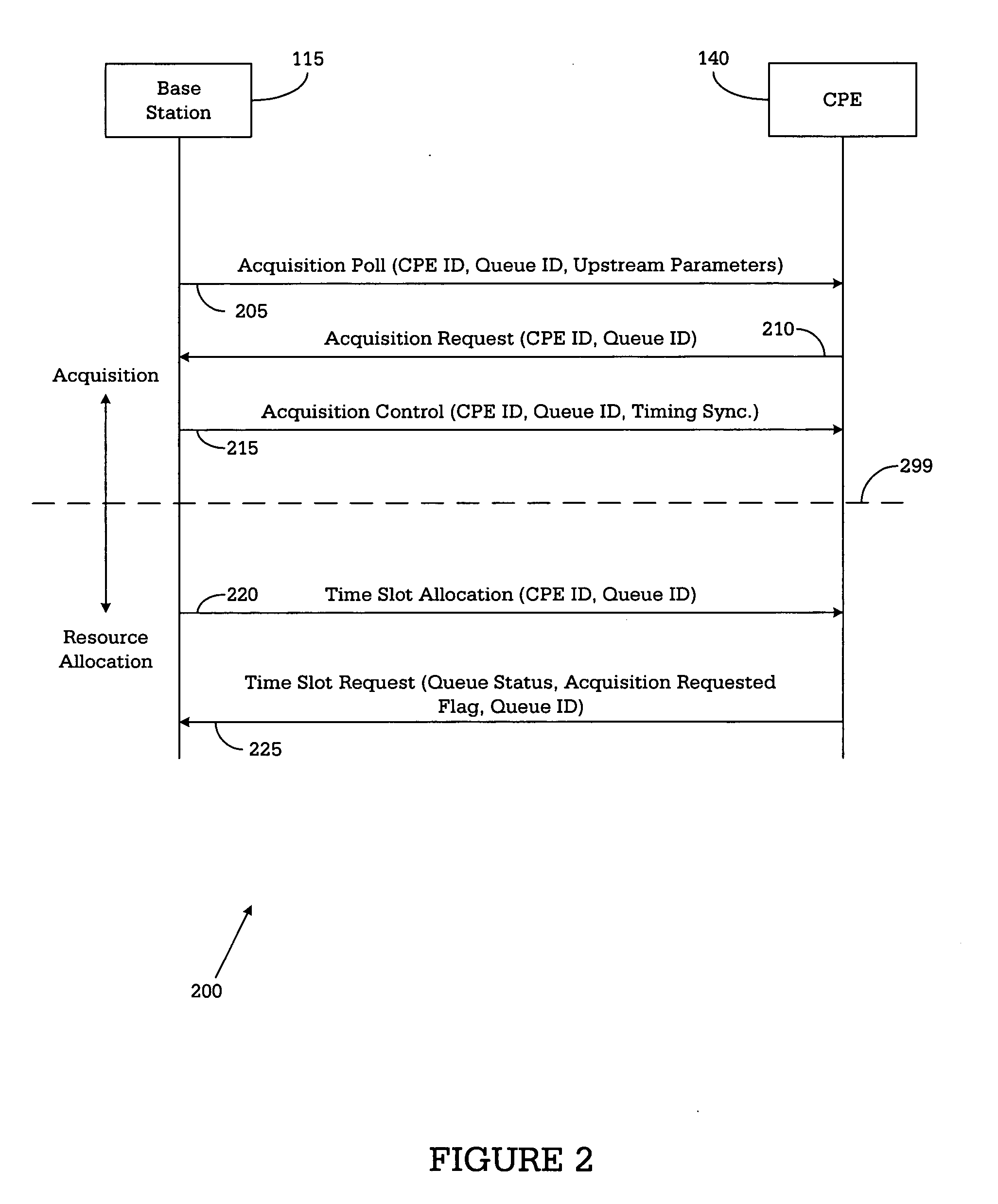MAC layer protocol for a wireless DSL network
- Summary
- Abstract
- Description
- Claims
- Application Information
AI Technical Summary
Benefits of technology
Problems solved by technology
Method used
Image
Examples
Embodiment Construction
[0025]FIGS. 1 through 5, discussed herein, and the various embodiments used to describe the principles of the present invention in this patent document are by way of illustration only and should not be construed in any way to limit the scope of the invention. Those skilled in the art will understand that the principles of the present invention may be implemented in any suitably arranged point-to-multipoint wireless network.
[0026]FIG. 1 illustrates selected portions of point-to-multipoint wireless network 100 according to an exemplary embodiment of the present invention. Wireless network 100 is a wireless DSL system that provides wireless digital subscriber line (DSL) services to a plurality of business locations, including exemplary offices 121 and 122, and to a plurality of private residences, including exemplary residences 131 and 132. According to the exemplary embodiment, the infrastructure portion of wireless network 100 comprises, in part, access 105, DSL access multiplexer (...
PUM
 Login to View More
Login to View More Abstract
Description
Claims
Application Information
 Login to View More
Login to View More - R&D
- Intellectual Property
- Life Sciences
- Materials
- Tech Scout
- Unparalleled Data Quality
- Higher Quality Content
- 60% Fewer Hallucinations
Browse by: Latest US Patents, China's latest patents, Technical Efficacy Thesaurus, Application Domain, Technology Topic, Popular Technical Reports.
© 2025 PatSnap. All rights reserved.Legal|Privacy policy|Modern Slavery Act Transparency Statement|Sitemap|About US| Contact US: help@patsnap.com



